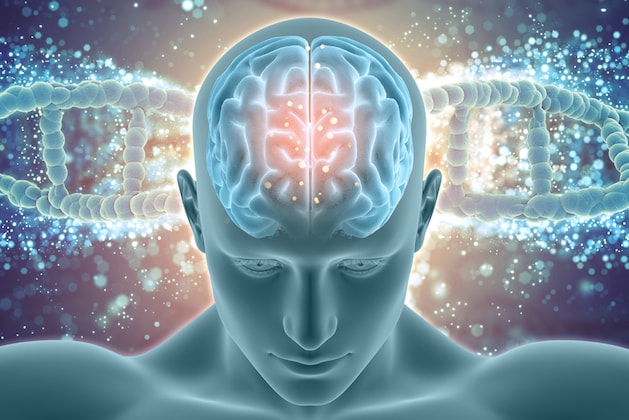Hidden actors: Among the thousands of relics of old virus genes in our genome, some are still active today – and could contribute to mental illnesses such as schizophrenia, depression and bipolar disorder, as a study has now revealed. In it, researchers identified five such endogenous retroviruses that play a significant role in the risk of disease. Exactly how this “fossil” viral genetic material causes this in us still needs to be clarified, but it could offer valuable approaches for diagnosis and therapy, according to the team.
Eight percent of our genetic material is not of human origin, but comes from ancient viruses. They are the genetic remnants of infections that our ancestors experienced thousands of years ago. For a long time, these human endogenous retroviruses (HERV) were considered inactive “DNA waste”, but it is now clear that these genetic virus remnants are still active in us today. Some are helpful and promote muscle growth, protect against cancer or help with embryonic development. Others, however, are suspected of promoting diseases such as multiple sclerosis.
Now Rodrigo Duarte from King’s College London and his team have identified further negative effects of these “stowaways” in our genome. To do this, they analyzed the gene activity in tissue samples from the prefrontal cortex in the forehead area of almost 800 people with and without psychiatric illnesses and also compared the DNA sequences with a genome database of thousands of comparison people. This allowed them to find out which of the active genes were of viral origin.
As a next step, the scientists examined which of these HERVs are significantly more active in people with mental illnesses such as schizophrenia, bipolar disorder, autism or depression. “We know that these diseases have a substantial genetic component,” says Duarte. “We have now specifically examined the parts of our genome that belong to endogenous retroviruses.”
The result: In total, Duarte and his team identified almost 5,000 active viral genes in the tissue of the human frontal lobe. Of these, 26 showed activity patterns linked to mental illness. Five of these endogenous retroviruses proved to be particularly significant and influential. “Two of these HERV signatures are specific for schizophrenia, one is significant for schizophrenia and bipolar disorder and one is significant for major depression,” the researchers report.
However, they did not find anything for other mental disorders such as autism or attention deficit hyperactivity disorder (ADHD). Although the analyzes identified seven genetic activity signatures linked to these diseases, none came from an endogenous retrovirus.
“Our results suggest that such endogenous viral sequences likely play a larger role in the human brain than originally thought,” says senior author Timothy Powell from King’s College London. “Specific HERV expression profiles are linked to an increased susceptibility to certain mental illnesses.”
However, it is not yet clear what mechanisms these endogenous retroviruses use to increase the risk of schizophrenia, depression or bipolar disorder. However, the analyzes suggest that this occurs in a relatively direct way and not just indirectly, for example via an effect on the immune system and the susceptibility of the tissue to inflammation. “Our results suggest that the expression regulation of these HERVs is important for brain function,” says Duarte.
According to the researchers, this could offer new approaches to the diagnosis and treatment of mental illnesses. “A better understanding of these ancient viruses and the genes involved in mental illness could revolutionize mental health research and open up new ways to treat or diagnose such disorders,” says co-author Douglas Nixon of Cornell University in New York.
The original for this article “How ancient viruses in the genome can trigger mental illnesses” comes from scinexx.















